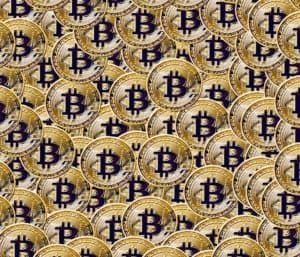 Global Fintech firm Circle notes that in the cryptocurrency over-the-counter (OTC) market, professional market participants are able to carry out large trades in a private manner and with “minimal price slippage,” which is why institutional clients are now “flocking” towards crypto OTC trading desks.
Global Fintech firm Circle notes that in the cryptocurrency over-the-counter (OTC) market, professional market participants are able to carry out large trades in a private manner and with “minimal price slippage,” which is why institutional clients are now “flocking” towards crypto OTC trading desks.
Although there are no official or confirmed figures because of the private nature of the OTC market, “anecdotal” evidence indicates that the cryptocurrency OTC market regularly “sees 2x to 3x” the amount of trading volumes that digital currency exchanges handle on a daily basis.
The digital asset market is now valued at more than $1 trillion, however, large Bitcoin trades are still able to “move the needle quite significantly if executed on-exchange, where the entire market can view the order books,” Circle claims.
According to Circle:
“Institutional investors, therefore, prefer the discretion, professionalism, and best-price execution provided by OTC trading desks. Additionally, there are no exchange limits affecting order size when trading with professional counterparties over-the-counter.”
Just a few years back, there were only a few OTC brokers providing crypto-asset trading services and Circle was one of them, the Fintech firm confirmed. But now, there are many more brokers that are competing over the institutional money that’s increasingly flowing into crypto while most established digital asset exchanges have also launched OTC trading desks in order to meet the growing market demand, Circle noted.
A research report from Capco reveals that North America and Asia have “the most vibrant crypto OTC markets.” As noted by Circle, market participants now include major hedge funds, prop trading houses, family offices, cryptocurrency miners, broker-dealers, investment funds, private banking institutions, and even high-net-worth individuals (HNWIs).
During the early days of cryptocurrency OTC trading, counterparties had been settling trades by using wire transfers, Circle noted. These days, digital dollar stablecoins (or digital assets pegged to real-world currencies like the US dollar) have “largely taken up the role of settlement rail as more and more professional investors are becoming comfortable with using digital currency,” Circle revealed.
Digital dollar stablecoins, such as USD Coin (USDC), have three main functions in the crypto OTC market. As mentioned in a blog post by Circle, USDC now serves as trading capital, a base currency for pricing, and as a counterparty settlement instrument.
Circle added:
“First and foremost, professional market participants use USDC as trading capital to improve their trading operation. Unlike US dollar wire transfers, USDC transactions settle within minutes and can cost as little as a few cents. Moreover, on-chain transactions can be followed in real-time, so both counterparties know exactly when funds have settled.”
Storing assets or funds “overnight” in USDC, therefore, makes “more sense for active traders who want to move quickly in and out of risky digital assets instead of initiating bank transfers at the start and end of each trading day,” Circle claims.
The Fintech firm further noted:
“Crypto OTC trading desks also use USDC as a quotation currency to price trades. Since transactions on OTC desks are typically settled in stablecoins, they are also utilized as pricing currencies. So, instead of quoting the price of Bitcoin as BTC/USD, OTC desks will typically quote BTC/USDC to their customers.”
Circle also mentioned that USDC is now deployed as a type of settlement instrument. On-chain USDC transactions may be easily viewed in “real-time” on its supporting public blockchain or distributed ledger technology (DLT) networks, meanwhile, settlement usually takes place “within minutes and at a fraction of the cost of an international wire transfer”
Circle added:
“Global counterparties can easily settle with each other in minutes or in seconds across countries. On Algorand, for example, transactions are near-instant and currently only cost approximately 1/20th of a cent. Crypto traders, therefore, prefer to settle their trades using digital dollars as opposed to traditional US dollar payment rails.”
USDC is now one of the fastest-growing “fully reserve” digital dollar stablecoins with a market cap of more than $5 billion, which makes it “one of the most liquid and secure stablecoins in the market,” Circle claims.
The company also noted:
“[USDC,] the market-leading stablecoin is regulated, highly-transparent, price-stable, and can be sent anywhere in the world at the speed of the internet. Each USDC is backed 1:1 by US dollar reserves held in regulated financial institutions. …every month, all dollar reserves are attested by leading international auditing firm Grant Thornton LLP. USDC holders can, therefore, rest assured that all their digital dollars are backed by US dollars held in a bank account.”
USDC users can take advantage of a wide range of supported digital (crypto) wallets, exchanges, decentralized applications (dApps), and decentralized finance (DeFi) protocols that are able to support the digital dollar stablecoin. For instance, traders may be interested in earning yield on their digital dollars. They can either deploy them in DeFi protocols or in Circle’s “High Yield Accounts.”
Professional digital asset traders or investors may also integrate a Circle Account into their trading operations to “fully utilize USDC’s features as programmable digital money.”
Circle Accounts allow professional traders to “securely store and send and receive on-chain USDC to and from trading counterparties within minutes,” the company noted. All digital dollars maintained or residing in a Circle account are “insured, and account holders can seamlessly convert fiat currency bank account balances into USDC and vice versa,” the company confirmed.

